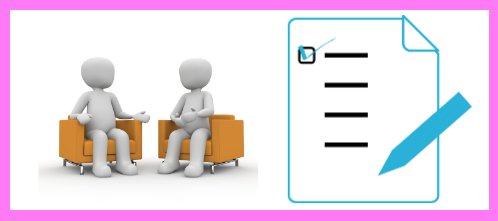


Meeting Menace Behaviors:
- Gets and acts irritated or upset at meetings
- Frequently interrupts peoples at meetings
- Asks question like weapons – not for inquiry, disguised statements
- Over talks issues to advocate only one’s ideas
- Makes disagreements a grand performance
- Fails to build on other’s ideas
- Doesn’t acknowledge others
- Puts others on the spot – ask them to take sides on a conflict
- Doesn’t notice when others see debates as uncomfortable conflicts / confrontations
- Interrogates people in a condescending matter
Meeting Master Behaviors:
- Takes time to prepare for meetings
- Decides desired outcomes for each statement made
- Asks clarifying questions before advocating for points
- Asks colleagues for feedback
- Before the meeting:
- Defines purpose and objectives of meeting
- Selects participants
- Secures space and equipment
- Prepares agenda and send it out ahead of time
- Ask if anyone wants to add items to agenda
- Conducts final check of meeting room
- During the meeting:
- Start promptly
- Assign roles
- Facilitator:
- keeps meeting going and aligned to agenda
- holds people to meeting norms. see below
- maintains a parking lot for off topic but interesting items
- Scribe:
- Takes meeting notes (minutes)
- Shares notes within 48 hours of meeting
- Participants
- Follow norms
- Add value to meeting
- Notify others if you can’t make it to meeting
- Facilitator:
- Prioritizes agenda time frames at meeting start
- Manages time
- Adopts and observes meeting norms such as
- Arrive on time
- Be well-prepared
- Be concise.
- Make “I” statements.
- Don’t hold sidebar conversations.
- Participate in a constructive manner.
- Seek first to understand before being understood.
- Make your thinking visible.
- Don’t interrupt.
- Hears from everyone
- Limits or encourages discussion (depends on timing and prioritization of agenda items)
- Clarifies actions to be taken
- Summarizes results
- After the meeting:
- Gathers self / peer feedback on meeting
- Satisfied with meeting? (0 – 10 score)
- What was good, bad, and in need of improvement?
- How on track was meting? (0-10 score)
- Restores the room
- Ensures scribe shares minutes
- Follows up on agreed upon actions
- Prepares next steps
- Evaluates the content (what) and processes (how) used during meeting
- Gathers self / peer feedback on meeting
Meeting Types:
- Stand-ups:
- 10-15 minutes
- other names: red flag meetings, huddles
- team stands in a circle
- each person has opportunity to say something or pass
- not a problem solving meeting
- acceptable topics:
- everyone’s need-to-know info
- red flag issues – someone needs help to solve an urgent problem
- share new info
- share progress reports
- clarify vision or deliverables
- celebrate small wins
Meeting Checklist:
- Meeting leadership:
- agenda was clear and explained up front
- conveyed overall purpose of meeting
- honored time frames
- Accountability:
- individuals were prepared for meeting
- actions had a clear assignment, owner and deadline
- clarified resources for tasks
- considered other stakeholder’s impact and involvement
- Communication:
- Summary of decisions communicated
- Summary of actions and their owners communicated
- Next steps were stated and clarified
- People evaluated the meeting and discussed improvements

Adding value to meetings by exhibit meeting mastery behaviors and avoiding meeting menace behaviors is critical to making good lasting impressions in the work place. People tend to get thin-sliced or permanently characterized (judged) by the snapshots of their character displayed at meetings. People with positive snapshots tend to be more trusted. Those with negative snapshots tend to stimulate negative feelings from co-workers such as dismissal, fear, and distrust.
Teaching students how to be meeting masters can prepare them to convey positive messages to their peers and future co-workers about their collaboration and leadership styles. All of the meeting master behaviors are skills that can be modeled and practiced over time.

Preparation Steps
- Develop checklists of meeting menace and meeting master behaviors.
- Have students use the checklists to reflect upon the behaviors they have exhibited at class and team meetings. Use this reflection to plan next steps and improvements
Early Implementation Steps
- Model meeting master behaviors.
- Teach students how to facilitate and participate in effective short and longer meetings.
- Teach students how to communicate better at meetings – types of important communication – courteous, summarizing, curious, open, perspective and empathy building, etc
- Role play meeting types with groups so they can practice meeting skills
Advanced Implementation Steps
- Incorporate routine team meetings into project work days. Support these meeting with checklists of meeting actions and meeting roles & responsibilities.
- Have students document their meeting minutes in some form and share these with you.

- Collaboration articles
